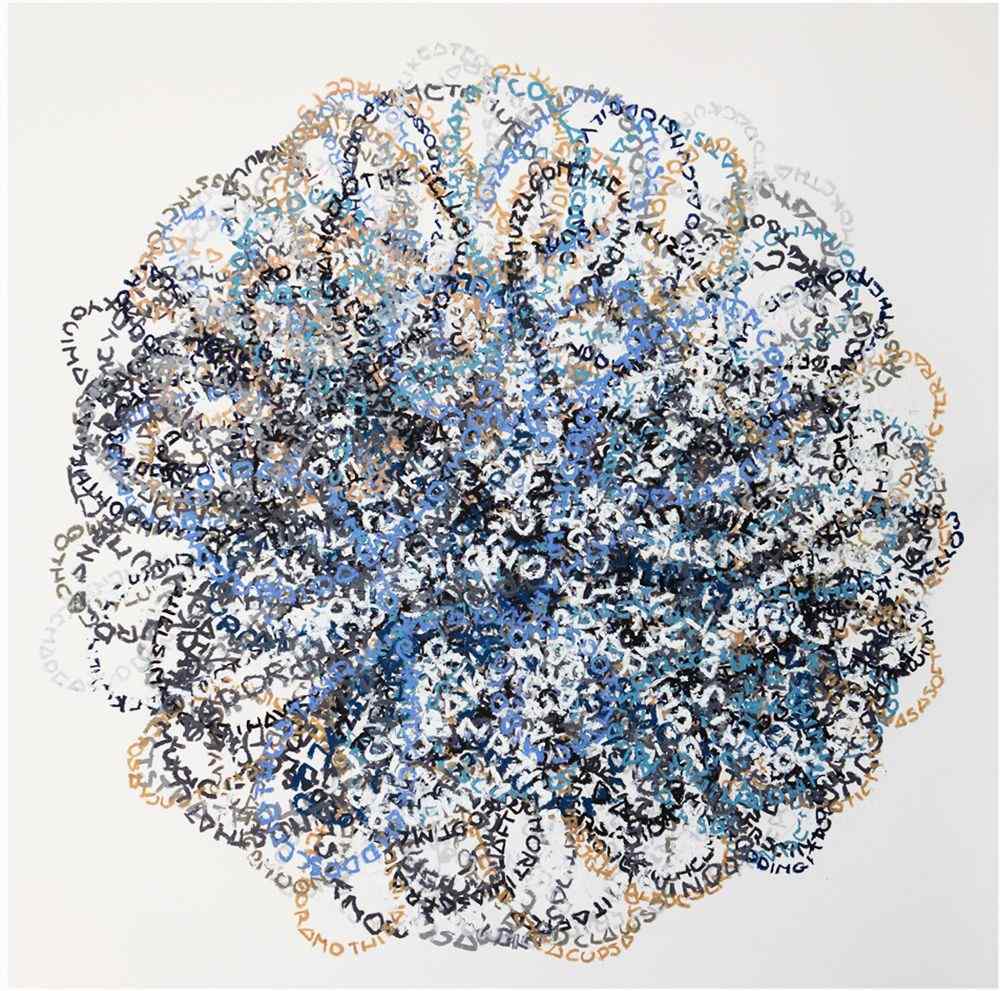Claudia Debris

Après avoir suivi les cours de l’école d’Art de la Temple University de Philadelphie, elle s’installe à Milan ou elle travaille, jusqu’au milieu des années 80, comme directrice artistique pour l’agence de publicité Saatchi & Saatchi. En 1986 elle ouvre un atelier de graphisme avec son mari tout en travaillant à ses propres projets artistiques. Claudia travaille actuellement entre Genève en Suisse et Ostuni en Italie
"Je vois mon travail comme un dispositif mnémonique, comme une aide visuelle dans le stockage d’informtion. La mémoire est en fait le fil rouge qui traverse toute ma production artistique. J’ai initialement travaillé sur des collages, appelés écritures pictographiques où des imprimés originaux des annèes 1960/70s - des publicités, des magazines, des photos de famille - étaient découpées et arrangées sur un modèle rythmique récurrent comme pour rappeler une partition de musique ou, comme dans des oeuvres postérieures, un alphabet optique.
En 2013 j’ai remplacé les découpes d’images par des textes venant de sources diverses:
de la littérature classique comme l’Origine des Espèces pour Elements 1-2-3-4
La Bible pour 11,1-9
Le Journal d’Etty Hillesum pour Love, où la somme des minuscules mots écrits composent une image sur papier, maintenant libérées de toutes contraintes temporelles ou d’éléments nostalgiques, souvent prédominants, de ce que j’appelle, la visualisation mnémonique."
Claudia Debris - Recent works - ArtGenève 2018
You see: I have copied out your sonnet... And now I am giving you that copy, because I know that it is important and full of new experience to find one’s own work again in a strange handwriting.
This brief paragraph taken from Letters to a young poet by Reiner Maria Rilke fully expresses the thought behind my art.
Literature has always been the inspirational source of my work: much of what I perceive while reading, whether Van Gogh's correspondence to his brother Theo or a play script by Antonin Artaud, generates in me a circuit of undefinable emotions and by copying "in a strange handwriting" I create a "new experience" that doesn't disregard the original content rather enters in communion with it. In a way I feel like a musician composing an opera from a libretto.
Also in these recent works, either by pressing the paper on which I copy the text, or using notebook sheets and keeping their original centerfold, I create a 3D chiaroscuro over the vast fields that cover the surface of the paper, adding depth and modified rhythm to the composition.
The painstaking act of reproducing books, chapters, passages in minute hand writing on very large sheets of paper has become for me a form of resistence against today’s “horror pleni”
This commitment to the physical process of making is evidente in my latest works on paper.
I started to use text in 2013, when I created “Sappi che...” (“You must know that...”), based on my correspondence with a friend. The actual content of the letters make up the image of this first work. More specifically, the 36 letters that form the epistolary relationship between me and my friend, who reconnected via e-mail after a 40- year gap, are copied down in a very small red ink hand writing to form a broad irregular surface of concentric rings which recall the perpetual motion of time.
In the works that followed the reiterated texts, taken from various publications, create vast geometric shapes which reinforce and explicate the verbal content.
Thus, all these initial works are a visual reinterpretation of a chosen text.
I eventually broke away from a narrative arrangement when I stopped coping literally and started to break down the words into individual letters, scattering and overlaying them in a haphazardly manner across the page, so to lose the verbal meaning of the original source. I hence created my first kaleidoscopic assemblage Darwin, chapter 4.
Since literature is my main source of inspiration, my choice is practicaly endless.
There is no specific relationship though between the authors, whether Darwin or Pinter, Warhol or Melville, fiction or non-fiction. Rather, I allow subliminal messages from the text to emerge that, in turn, may go beyond the book’s specific content. By deconstructing the original text literarily I visually recreate an undefined world of constantly changing patterns that combined make up an unlimited number of images.